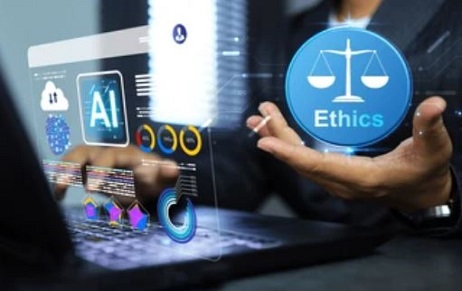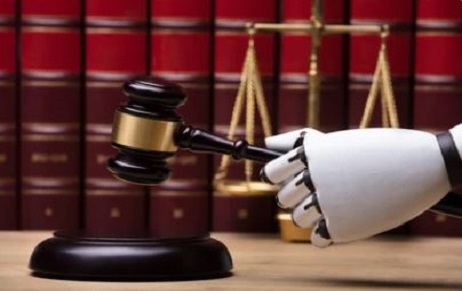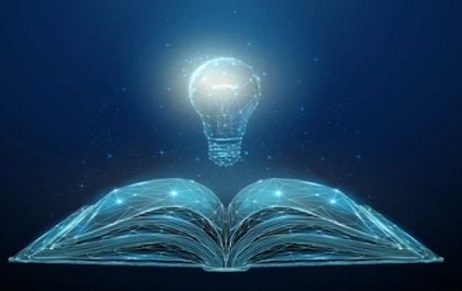A new era started with the innovation of Artificial Intelligence (AI). AI systems can produce…
AI and Copyright Infringement
Introduction
AI is posing a wide range of moral and legal issues, including whether AI can own copyright for the work it creates. Existing legislation states that AI cannot possess any type of copyright in the work it creates, as only human writers are granted copyright. Recently, In Stephen Thaler v. Comptroller General of Patents Trade Marks and Designs[1] , the UK Court of Appeal rejected Dr. Stephen Thaler’s appeal, ruling that an AI system cannot be identified as the inventor on a patent application and that a human inventor is required to have the right to apply for an invention. Section 7 of the Patents Act 1977 outlines the eligibility criteria for patents, with the inventor being the primary recipient. Applicant must identify the inventor and provide an explanation of their patent eligibility as required by Section 13(2). Dr. Thaler produced two patent applications, asserting that DABUS was the original inventor and that he had the authority to do so as he was the owner of the DABUS machine. The UK Intellectual Property Office, however, declared the patent applications withdrawn as Dr. Thaler did not fulfil section 13(2) standards and DABUS could not be regarded as an inventor.
The only item eligible for copyright under the existing Copyright Act is an original work of authorship, and courts have construed authorship to imply a human author. For something to receive a copyright, the work has to be considered minimally creative and expressive. This question dates back to the 19th century case Burrow-Giles Lithography vs Sarony[2], which involved the question of whether a photograph could be copyrighted.
Today, we take it for granted that all images, whether captured on film or digitally, are copyrighted forms of expression. However, the US Supreme Court assumed that a photograph taken by a photographer will have the minimal creativity required for copyrightability, whether it be in the framing, settings used on the camera, the posing of subjects, or the selection of the subject itself. In some cases, people have attempted to create art using AI, registered that work with the Copyright Office, and declared to the Copyright Office that the work was wholly produced by AI. Because there was no human authorship or expressive creativity in such instances, the Copyright Office refused a copyright for those particular works[3].
AI and DATA: Analysis of Copyright infringement
AI and data are also a concern, as many people are upset about how AIs are trained. Recently, New York Times moved to Supreme court against Open AI and Microsoft AI alleging copyright infringement where LLMs were trained using their articles[4]. Some cases have seen AI replicate an artist’s style and produce new works in that original author’s style after training on a dataset of a specific author’s or painter’s work. In general, you cannot get a copyright on a specific aesthetic, although you can do so for specific works of art.
It appears that most AIs are almost worthless unless they have been trained on a large dataset, which typically entails collecting huge amounts of copyrighted content off the internet. If something appears to violate someone else’s copyright, it probably does.

Copyright infringement occurs when someone reproduces their work and incorporates it into a data collection. However, even if something could initially be seen as copyright infringement, a fair use defense may be available. In the Perfect 10 v. Google case[5], Google scraped the entire internet, including photographs, and created thumbnails in search results, serving a different function than the original photos. The courts determined that while Google was infringing on copyright, it was legal to do so since the thumbnails served a different purpose than the original photos.
The Authors Guild v. Google case[6], known as the Google Books Case, involved Google creating a large database of nearly every book ever published and allowing users to search through it. The court sided with Google, stating that while the initial formation of this data set and reproduction of these books might qualify as copyright infringement, the court allowed Google to get away with it because its purpose was for fair use purposes.
Both sides have valid points to make, but one may argue that an AI’s actions are comparable to those of Google’s search engine. Another counterargument is that what the AI is actually doing is what every single person in the world is doing. While it is plausible that this will be resolved statutorily, there may be a carve out in the law that says that while people are performing the same procedure, there is no fair use defense if an algorithm in an AI is doing it[7].
Copyright infringement can still occur even if you do not have a copyright in the object in question. Infringing on someone else’s copyright is often a strict liability offense, and the coder may theoretically be held accountable. However, there are unintended consequences that could arise from copyright infringement, and lawsuits are starting to pour in, testing out these copyright issues.
Stability AI, a technique developed to create generative tools like Diffusion, is facing lawsuits for allegedly downloading millions of photos from its website, potentially violating UK law’s Standard of Fair Dealing. The company has been informed by Getty photos of its intention to sue the company in the UK for illegitimately downloading millions of photos from its website. Stable Diffusion is known for its transparency about where it obtains its data, with many images from stock photo websites and even mimicking the Getty Watermark.
Getty, however, claims that it is not attempting to shut down the business but rather to establish a license arrangement similar to Spotify’s with its rights holders. Meanwhile, visual artists have brought a class action lawsuit against Stability AI, Midjourney, and Deviant Art for violating copyright by using artist’s photographs to train their image generators and create derivative works[8]. The plaintiffs argue that AI-generated art is just modern-day collage tools that allow users to create unauthorised derivative works.
Both sides of the debate on whether the produced images would be considered derivative works face challenges, as copyrighted images are protected, while an artist’s aesthetic is not. In most cases, decisions about copyright infringement are made picture by image. The Andersen v. Stability AI[9] case asserts that Stable Diffusion uses training images to produce seemingly new images through a mathematical software process, making them derivative works of the specific images used to build a specified output.
The plaintiffs argue that every piece of work produced by AI is a derivative, and that derivatives are considered changed under the Copyright Act. Fair use in copyright litigation is a complex issue that requires a change or transformative approach. The term “derivative work” does not apply to all works that draw from previously published works, as it only applies when the work substantially mimics another piece of work. This means that there are few things that are strictly new and original throughout literature, science, and art.
Artists like Virgil, Bacon, Shakespeare, and Milton have learned from the rich resources of historical knowledge and classical studies available to them in their day. However, not all works of art are new, unpublished, or legally competent to be protected. The Stability AI lawsuit continues to argue that a buyer seeking a new image in a particular artist’s style has had to pay to commission or license an original image from that artist. However, technically speaking, the styles of artists are not protected, and you can request another artist to create an artwork in their style but with an entirely different theme.
Conclusion
Copyright infringement criteria typically include proving the act of real copying, proving that the copied material is substantially identical, or that it was appropriated improperly or illegally. The general consensus is that unlawful appropriation must have been a protectable expression of the earlier work that was copied, and the amount of that copying must have exceeded de minimis, or the bare minimum that the law doesn’t actually permit.
The question of whether art created by AI based on taught pictures is inherently a derivative work and if it violates the copyright of the original work is also up for debate. Copyright decisions are nearly typically made on an individual basis, and it is difficult to determine if anything produced by this technique is inevitably an infringement. Even if the defendants agree that there was copying, the issue is not resolved.
Author: KRIPANSHI CHAUHAN, in case of any queries please contact/write back to us via email to [email protected] or at IIPRD.
[1] Court S, “Thaler (Appellant) v Comptroller-General of Patents, Designs and Trademarks (Respondent) – The Supreme Court” <https://www.supremecourt.uk/cases/uksc-2021-0201.html?trk=public_post_comment-text>
[2] Burrow-Giles Lithographic Company v. Sarony, 111 U.S. 53 (1884). (n.d.). Justia Law. https://supreme.justia.com/cases/federal/us/111/53/
[3] “Lexis+® – Sign In | LexisNexis” <https://www.lexisnexis.com/community/casebrief/p/casebrief-naruto-v-slater>
[4] “NYT_Complaint_Dec2023” (https://nytco-assets.nytimes.com/) <https://nytco-assets.nytimes.com/2023/12/NYT_Complaint_Dec2023.pdf> accessed January 26, 2024
[5] 508 F.3d 1146 (9th Cir. 2007)
[6] 804 F.3d 202 (2d Cir. 2015)
[7] Stim R, “What Is Fair Use?” (Stanford Copyright and Fair Use Center, November 25, 2021) <https://fairuse.stanford.edu/overview/fair-use/what-is-fair-use/>
[8] Mattei SE-D, “ARTnews.Com” (ARTnews.com, May 5, 2023) <https://www.artnews.com/art-in-america/features/midjourney-ai-art-image-generators-lawsuit-1234665579/>
[9] Docket No. 3:23-cv-00201 (N.D. Cal. Jan 13, 2023), Court Docket9



